A pair of neoclassical stools, circa 1778, attributed to Godtfried Weber, the mounts by Michel Dewez, the design attributed to Laurent-Benoît Dewez, Brussels
gilt-bronze, rosewood and hazel wood; with old inventory labels Herrschaft Seelowitz-Schloss-Inventar No. 195, 12 Stück; some mounts marked II, V and XII; inscribed in black paint HI.height 18½in.; width 23¼in.; depth 17 in.; 47 cm; 59,2 cm; 43 cm.
(2)____________________________________________
Paire de tabourets néoclassiques, vers 1778, attribués à Godtfried Weber, les montures par Michel Dewez, le dessin attribué à Laurent-Benoît Dewez, Bruxelles
monture de bronze doré, bois de rose, bois de noisetierheight 18½in.; width 23¼in.; depth 17 in.; 47 cm; 59,2 cm; 43 cm.
(2)Condition reportFor further information on the condition of this lot please contact brice.foisil@sothebys.com ProvenanceFrom a set of twelve supplied in 1778 to Charles-Alexandre, Duc de Lorraine et Bar (1712-80), Governor-General of the Austrian Netherlands, for the Chambre d'Audience of the Palace of Charles de Lorraine, Brussels;Removed from the Palace of Charles de Lorraine after the Duc's death in 1780 and transferred to the Schonenberg Palace (now the Royal Palace of Laeken), Brussels, for the use of Duke Albert of Saxe-Teschen (1738-1822) and Duchess Marie-Christine of Teschen (1742-1798), joint Governor-Generals of the Austrian Netherlands, circa 1784;Removed from Schonenberg with the other palace contents and sent to Vienna via Hamburg following the French invasion of the Austrian Netherlands, circa 1792-93;By descent to Archduke Charles, Duke of Teschen (1771-1847);By descent to Archduke Albrecht, Duke of Teschen (1817-1895);By descent to Archduke Friedrich, Duke of Teschen (1856-1936), Schloss Seelowitz, Brünn (now Zámek Židlochovice, Brno, Czech Republic) and the Palais Erzherzog Albrecht (now the Albertina), Vienna;Galerie Aveline, Paris.____________________________________________
D'une série de douze pièces fournies en 1778 à Charles-Alexandre, duc de Lorraine et Bar (1712-80), gouverneur général des Pays-Bas autrichiens, pour la chambre d'audience du palais Charles de Lorraine, à Bruxelles;Retiré du palais Charles de Lorraine après la mort du duc en 1780 et transféré au palais Schonenberg (aujourd'hui palais royal de Laeken), Bruxelles, à l'usage du duc Albert de Saxe-Teschen (1738-1822) et de la duchesse Marie-Christine de Teschen (1742-1798), gouverneurs généraux conjoints des Pays-Bas autrichiens, vers 1784;Retiré de Schonenberg avec le reste du contenu du palais et envoyé à Vienne via Hambourg après l'invasion française des Pays-Bas autrichiens, vers 1792-93;Descend de l'archiduc Charles, duc de Teschen (1771-1847);Descendant de l'archiduc Albrecht, duc de Teschen (1817-1895);Par descendance de l'archiduc Friedrich, duc de Teschen (1856-1936), Schloss Seelowitz, Brünn (aujourd'hui Zámek Židlochovice, Brno, République tchèque) et le Palais Erzherzog Albrecht (aujourd'hui l'Albertina), Vienne;Galerie Aveline, Paris.LiteratureReinier Baarsen and Leo De Ren, 'Ebénisterie at the Court of Charles of Lorraine,’ in Burlington Magazine CXLVII, February 2005, p.98 figs. 28, 29.
Reinier Baarsen, 'Charles of Lorraine's Audience Chamber in Brussels,' in Burlington Magazine CXLVII, July 2005, p.468 fig.22.
Joseph Folnesic, Alte Innenräume, Österreichischer Schlösser, Paläste und Wohnhäuser, Vienna 1921, plates 5, 6 and 13.Catalogue noteThis magnificent set of tabourets is an extremely rare survival of important neoclassical court furniture produced outside of Paris, created for a palace interior that has been described as 'one of the most lavish rooms created in Europe at the end of the ancien régime' (Baarsen, p.464), for a household widely regarded as one of the liveliest of the period, described at the time by the Prince de Ligne as 'une jolie cour gaie, sûre, agréable, polissonne, buvante, déjeunante et chassante’ (Journal Secret de Charles de Lorraine 1766-1779, ed. Michèle Galand, Brussels 2000, p.11)
Charles-Alexandre de Lorraine, a governor of the Siècle des Lumières
In the 18th century the southern provinces of the Low Countries (modern day Kingdom of Belgium) were an Austrian dominion, ruled by a governor appointed by the Habsburg monarchy in Vienna. Born in the then-independent Duchy of Lorraine and Bar at court of his father Duke Léopold in Lunéville, Charles-Alexandre left the Dukedom when it was deeded to the deposed king of Poland Stanislas Leszczyński in 1736, the same year his elder brother François-Etienne married the future Austrian Empress Maria Theresa. Charles then entered into the Habsburg Imperial service and became Maria Theresa’s brother-in-law a second time in January 1744 when he married her younger sister, the Archduchess Marie-Anne- who died eleven months later. After fighting in the Habsburg army during the War of Austrian Succession, he settled into his new position in Brussels in 1749.
Charles de Lorraine was the epitome of an Enlightened ruler, described by Belgian historians as ‘le plus populaire ou, pour parler exactement, le seul populaire de nos gouverneurs’ (Claire Dumontier, Un passe-temps princier. Les manufactures de Charles de Lorraine, exhibition catalogue, Musées royaux d’art et d’Histoire, Brussels 2007). He encouraged local manufacturers in his territory and introduced measures to improve agriculture and transport infrastructure; he was a keen advocate of learning and the arts, founding the Académie Royale et Impériale des Sciences et des Letters in 1772, and actively supporting musicians and the Brussels court theatre La Monnaie. He possessed country seats at the 16th-century Château de Mariemont in Hainaut which he had reconstructed in the neoclassical taste by the court architect Laurent-Benoît Dewez (1731-1812) and the Château de Tervuren east of the capital, where he constructed a special pavilion to house small workshops for artisans to produce wallpapers, porcelain, and metalwork, including locks and hinges, table services, candelabra, wall lights and chandeliers in iron, pewter, silver and silver-plate, all following methods outlined in the Encyclopédie.
A Richly-Appointed New Imperial Palace
In Brussels the original seat of the Habsburg governors, the sprawling medieval and Renaissance Coudenberg Palace, had been destroyed by a fire in 1731, and the residence was transferred to the medieval Orange-Nassau palace nearby, which Charles had refurbished in a more up-to-date classical style in several phases beginning in the late 1750s by the architects Jean Faulte (d.1766) and Dewez. The interiors were furnished with purchases in Paris made through the agents Campanon and Richard, as well as from Brussels dealers who imported works of art from the French capital such as Maurice Janti (Baarsen and De Ren, p.94-95). The Duc also acquired important furniture from David Roentgen notably a pair of games tables and a monumental bureau cabinet surmounted by a clock by Christian I Kinzing, the prototype for two further secrétaires Roentgen later supplied to Louis XVI and Friedrich Wilhelm II of Prussia (now in the Museum für angewandte Kunst, Vienna). Charles would also patronise local Brussels ébénistes, and his accounts reveal payments to Albert de Lannoij in the early 1760s for a bureau and two commodes, in addition to regular commissions for marquetry and mahogany furniture from the cabinetmaker Jan Van Eyck throughout the 1760s and 70s.
As a childless widower who never remarried, Charles was able to focus assiduously on acquiring works of art, and he formed an extensive collection of Sèvres and Chinese porcelain, silver, sculpture, paintings and especially watches and clocks - of which he owned several hundred examples, including a spectacular musical automaton by the Antwerp clockmaker J.C. Lambreghts in the form of a gilt metal obelisk resting on pearl-spitting bronze dragons (now in the Al-Thani collection; exhibited in Making Marvels, Science and Splendor at the Courts of Europe, Metropolitan Museum of Art, New York, 25 November 2019 - 1 March 2020, no. 126).
In the 1770s Charles decided to completely refurbish the two principal state rooms of his winter apartments on the first floor, the Grand Salon and Audience Chamber, with a particular emphasis on gilt bronze objects by the bronzier Michel Dewez, brother of the court architect Laurent-Benoît. The younger Dewez (1742-1804) had apprenticed in the workshop of the Paris silversmith Joseph Roettiers and following his return to Brussels was appointed court goldsmith in 1773. For the Grand Salon Dewez provided elaborate candelabra mounts for ten large Chinese porcelain vases in 1777, along with ten pairs of wall lights decorated with either the Cross of Lorraine or the Cross of the Teutonic Order, of which the Duc was the Master. One pair of these vases and two pairs of the wall lights are now at Waddesdon Manor (G. de Bellaigue, The James A. De Rothschild Collection at Waddeson Manor, Fribourg 1974, Vol. II, nos.228-230).
Just as Augustus the Strong, Elector of Saxony and King of Poland, was obsessed with Chinese, Japanese and Meissen porcelain and was famously described as suffering from 'porcelain sickness' (Porzellankrankheit, or la maladie de porcelain), it could equally be argued that Charles de Lorraine was afflicted with la maladie du bronze doré. For his Audience Chamber he commissioned what has been called a 'showcase of ébénisterie' in which the parquet floor and walls were inlaid with marquetry of rosewood and noisetier de Turquie (Turkish hazel, Corylus colurna), and the Flemish tapestries after Teniers were replaced with what the Duc called 'tapisserie de bois', two monumental marquetry panels by Roentgen depicting the Peace between the Romans and Sabines and the Continence of Scipio (also now in the Museum für angewandte Kunst, Vienna). The entirety of the walls, including the cornice, frames of the overdoors and window surrounds were mounted with no fewer than 1,298 gilt bronze elements of over twenty-nine different models, appraised at a value of over 49,000 guilders (Baarsen and De Ren, p.99). This provided the stage for the present lot of four stools, from an original set of twelve, designed en suite with two large sofas, a pair of console tables and a large bureau plat, all veneered in the same rosewood and Turkish hazel of the wall and floor inlay, and all richly mounted in gilt bronze. The overall effect must have been one of dazzling magnificence and theatricality.
The palace accounts record a payment in January 1778 for the woodwork of the two sofas to Godtfried Weber, who must have also been responsible for the frames of the stools. This maker was presumably of German origin, and may be the 'Godfrid' who appears in monthly payments to the 'menuisiers' working in the Audience Chamber from December 1774 to the end of 1776. Charles de Lorraine noted in his diary entry of 28 August 1778 that he paid Michel Dewez for his 'tabourets', which must refer to the mounts of the stools (Baarsen, p.468). The large bureau plat from the Audience Chamber has recently been identified as the writing desk from the 2nd Marquess of Abercorn in the Wallace Collection (F320, previously described as 19th-century French), using the same veneers as the stools and constructed in a manner more akin to the hand of a menuisier rather than a fully trained cabinetmaker, suggesting it would have also been made by Weber with mounts provided by Dewez.
Later History of the Tabourets
Perhaps unsurprisingly Charles de Lorraine's unbridled passion for building projects and collecting left him with substantial debts upon his death, and Emperor Joseph II took a dim view of his late uncle's extravagance. Many of the fittings of his palace were stripped and sent to Vienna, and the majority of his art collections were sold at auction in Brussels in 1781. The palace itself suffered damage during the French occupation and underwent significant transformations in the 19th and 20th centuries, and today only one wing survives as part of the Royal Library. Much of the original furniture, however, was not included in the 1781 auction, and presumably transferred to Charles's successors Duke Albert Casimir of Saxe-Teschen and his wife Archduchess Marie-Christine, sister of Queen Marie-Antoinette of France, who were important art collectors in their own right, notably of works on paper. The couple commissioned the neoclassical architect Charles de Wailly to build a new palace on the outskirts of Brussels, Schonenberg, between 1782 and 1784 (later renamed Laeken and now the principal seat of the Belgian Monarchy). The sophisticated design of the stools would have corresponded perfectly with their taste in furniture and works of art, as gleaned from an extraordinary series of surviving drawings known as the Saxe-Teschen Album (Metropolitan Museum of Art, Esmerian Bequest). The drawings depict furniture, clocks, and mounted porcelain vases all in the most up-to-date late neoclassical style, likely representing some works in the Saxe-Teschen collection at Laeken and/or works offered to the couple by the Parisian marchand mercier Daguerre, whom they met on their visit to Paris in August 1786. Interestingly, the album includes watercolours of two gilt-bronze mounted celadon vases of identical model to vases also now in the Al-Thani Collection [Lots 38 and 61 in this sale].
Following the 1789 Brabant Revolution and invasion by the French Revolutionary armies in 1792, the Saxe-Teschens were forced to flee Brussels, and the collections from their palace were packed for despatch via sea to Hamburg on three ships for onward transfer to Vienna (although one of the ships would sink). In Vienna the Saxe-Teschens were gifted the Tarouca Palace, a 1740s extension to the Hofburg that Duke Albert had rebuilt by the Belgian-born architect Louis Montoyer. Marie-Christine died prematurely in 1798, and Albert devoted the rest of his life to enriching his art collection, which would ultimately form the nucleus of the Albertina. In 1819 the Duke acquired Schloss Seelowitz in Moravia, where the entire set of stools was located for a time during the 19th century, according to the inventory labels on the four in the Al Thani Collection. At some point before 1919 at least part of the group was sent to Vienna, as six of the stools are visible in interior photographs of the Albertina Palace taken prior to its nationalisation after World War I. Although the fine art collection passed into state ownership, Archduke Friedrich was allowed to retain the furniture, much of which was gradually dispersed, although the stools do not appear in the main auction of the Archduke's furniture at Albert Kende auction house, Vienna on 8-10 February 1933. A pair of stools from the suite appeared at Phillips Zurich 28-29 November 2000, lot 339, and a single was sold Sotheby's Paris, 17 December 2002, lot 94.
A pair of neoclassical stools, circa 1778, attributed to Godtfried Weber, the mounts by Michel Dewez, the design attributed to Laurent-Benoît Dewez, Brussels
gilt-bronze, rosewood and hazel wood; with old inventory labels Herrschaft Seelowitz-Schloss-Inventar No. 195, 12 Stück; some mounts marked II, V and XII; inscribed in black paint HI.height 18½in.; width 23¼in.; depth 17 in.; 47 cm; 59,2 cm; 43 cm.
(2)____________________________________________
Paire de tabourets néoclassiques, vers 1778, attribués à Godtfried Weber, les montures par Michel Dewez, le dessin attribué à Laurent-Benoît Dewez, Bruxelles
monture de bronze doré, bois de rose, bois de noisetierheight 18½in.; width 23¼in.; depth 17 in.; 47 cm; 59,2 cm; 43 cm.
(2)Condition reportFor further information on the condition of this lot please contact brice.foisil@sothebys.com ProvenanceFrom a set of twelve supplied in 1778 to Charles-Alexandre, Duc de Lorraine et Bar (1712-80), Governor-General of the Austrian Netherlands, for the Chambre d'Audience of the Palace of Charles de Lorraine, Brussels;Removed from the Palace of Charles de Lorraine after the Duc's death in 1780 and transferred to the Schonenberg Palace (now the Royal Palace of Laeken), Brussels, for the use of Duke Albert of Saxe-Teschen (1738-1822) and Duchess Marie-Christine of Teschen (1742-1798), joint Governor-Generals of the Austrian Netherlands, circa 1784;Removed from Schonenberg with the other palace contents and sent to Vienna via Hamburg following the French invasion of the Austrian Netherlands, circa 1792-93;By descent to Archduke Charles, Duke of Teschen (1771-1847);By descent to Archduke Albrecht, Duke of Teschen (1817-1895);By descent to Archduke Friedrich, Duke of Teschen (1856-1936), Schloss Seelowitz, Brünn (now Zámek Židlochovice, Brno, Czech Republic) and the Palais Erzherzog Albrecht (now the Albertina), Vienna;Galerie Aveline, Paris.____________________________________________
D'une série de douze pièces fournies en 1778 à Charles-Alexandre, duc de Lorraine et Bar (1712-80), gouverneur général des Pays-Bas autrichiens, pour la chambre d'audience du palais Charles de Lorraine, à Bruxelles;Retiré du palais Charles de Lorraine après la mort du duc en 1780 et transféré au palais Schonenberg (aujourd'hui palais royal de Laeken), Bruxelles, à l'usage du duc Albert de Saxe-Teschen (1738-1822) et de la duchesse Marie-Christine de Teschen (1742-1798), gouverneurs généraux conjoints des Pays-Bas autrichiens, vers 1784;Retiré de Schonenberg avec le reste du contenu du palais et envoyé à Vienne via Hambourg après l'invasion française des Pays-Bas autrichiens, vers 1792-93;Descend de l'archiduc Charles, duc de Teschen (1771-1847);Descendant de l'archiduc Albrecht, duc de Teschen (1817-1895);Par descendance de l'archiduc Friedrich, duc de Teschen (1856-1936), Schloss Seelowitz, Brünn (aujourd'hui Zámek Židlochovice, Brno, République tchèque) et le Palais Erzherzog Albrecht (aujourd'hui l'Albertina), Vienne;Galerie Aveline, Paris.LiteratureReinier Baarsen and Leo De Ren, 'Ebénisterie at the Court of Charles of Lorraine,’ in Burlington Magazine CXLVII, February 2005, p.98 figs. 28, 29.
Reinier Baarsen, 'Charles of Lorraine's Audience Chamber in Brussels,' in Burlington Magazine CXLVII, July 2005, p.468 fig.22.
Joseph Folnesic, Alte Innenräume, Österreichischer Schlösser, Paläste und Wohnhäuser, Vienna 1921, plates 5, 6 and 13.Catalogue noteThis magnificent set of tabourets is an extremely rare survival of important neoclassical court furniture produced outside of Paris, created for a palace interior that has been described as 'one of the most lavish rooms created in Europe at the end of the ancien régime' (Baarsen, p.464), for a household widely regarded as one of the liveliest of the period, described at the time by the Prince de Ligne as 'une jolie cour gaie, sûre, agréable, polissonne, buvante, déjeunante et chassante’ (Journal Secret de Charles de Lorraine 1766-1779, ed. Michèle Galand, Brussels 2000, p.11)
Charles-Alexandre de Lorraine, a governor of the Siècle des Lumières
In the 18th century the southern provinces of the Low Countries (modern day Kingdom of Belgium) were an Austrian dominion, ruled by a governor appointed by the Habsburg monarchy in Vienna. Born in the then-independent Duchy of Lorraine and Bar at court of his father Duke Léopold in Lunéville, Charles-Alexandre left the Dukedom when it was deeded to the deposed king of Poland Stanislas Leszczyński in 1736, the same year his elder brother François-Etienne married the future Austrian Empress Maria Theresa. Charles then entered into the Habsburg Imperial service and became Maria Theresa’s brother-in-law a second time in January 1744 when he married her younger sister, the Archduchess Marie-Anne- who died eleven months later. After fighting in the Habsburg army during the War of Austrian Succession, he settled into his new position in Brussels in 1749.
Charles de Lorraine was the epitome of an Enlightened ruler, described by Belgian historians as ‘le plus populaire ou, pour parler exactement, le seul populaire de nos gouverneurs’ (Claire Dumontier, Un passe-temps princier. Les manufactures de Charles de Lorraine, exhibition catalogue, Musées royaux d’art et d’Histoire, Brussels 2007). He encouraged local manufacturers in his territory and introduced measures to improve agriculture and transport infrastructure; he was a keen advocate of learning and the arts, founding the Académie Royale et Impériale des Sciences et des Letters in 1772, and actively supporting musicians and the Brussels court theatre La Monnaie. He possessed country seats at the 16th-century Château de Mariemont in Hainaut which he had reconstructed in the neoclassical taste by the court architect Laurent-Benoît Dewez (1731-1812) and the Château de Tervuren east of the capital, where he constructed a special pavilion to house small workshops for artisans to produce wallpapers, porcelain, and metalwork, including locks and hinges, table services, candelabra, wall lights and chandeliers in iron, pewter, silver and silver-plate, all following methods outlined in the Encyclopédie.
A Richly-Appointed New Imperial Palace
In Brussels the original seat of the Habsburg governors, the sprawling medieval and Renaissance Coudenberg Palace, had been destroyed by a fire in 1731, and the residence was transferred to the medieval Orange-Nassau palace nearby, which Charles had refurbished in a more up-to-date classical style in several phases beginning in the late 1750s by the architects Jean Faulte (d.1766) and Dewez. The interiors were furnished with purchases in Paris made through the agents Campanon and Richard, as well as from Brussels dealers who imported works of art from the French capital such as Maurice Janti (Baarsen and De Ren, p.94-95). The Duc also acquired important furniture from David Roentgen notably a pair of games tables and a monumental bureau cabinet surmounted by a clock by Christian I Kinzing, the prototype for two further secrétaires Roentgen later supplied to Louis XVI and Friedrich Wilhelm II of Prussia (now in the Museum für angewandte Kunst, Vienna). Charles would also patronise local Brussels ébénistes, and his accounts reveal payments to Albert de Lannoij in the early 1760s for a bureau and two commodes, in addition to regular commissions for marquetry and mahogany furniture from the cabinetmaker Jan Van Eyck throughout the 1760s and 70s.
As a childless widower who never remarried, Charles was able to focus assiduously on acquiring works of art, and he formed an extensive collection of Sèvres and Chinese porcelain, silver, sculpture, paintings and especially watches and clocks - of which he owned several hundred examples, including a spectacular musical automaton by the Antwerp clockmaker J.C. Lambreghts in the form of a gilt metal obelisk resting on pearl-spitting bronze dragons (now in the Al-Thani collection; exhibited in Making Marvels, Science and Splendor at the Courts of Europe, Metropolitan Museum of Art, New York, 25 November 2019 - 1 March 2020, no. 126).
In the 1770s Charles decided to completely refurbish the two principal state rooms of his winter apartments on the first floor, the Grand Salon and Audience Chamber, with a particular emphasis on gilt bronze objects by the bronzier Michel Dewez, brother of the court architect Laurent-Benoît. The younger Dewez (1742-1804) had apprenticed in the workshop of the Paris silversmith Joseph Roettiers and following his return to Brussels was appointed court goldsmith in 1773. For the Grand Salon Dewez provided elaborate candelabra mounts for ten large Chinese porcelain vases in 1777, along with ten pairs of wall lights decorated with either the Cross of Lorraine or the Cross of the Teutonic Order, of which the Duc was the Master. One pair of these vases and two pairs of the wall lights are now at Waddesdon Manor (G. de Bellaigue, The James A. De Rothschild Collection at Waddeson Manor, Fribourg 1974, Vol. II, nos.228-230).
Just as Augustus the Strong, Elector of Saxony and King of Poland, was obsessed with Chinese, Japanese and Meissen porcelain and was famously described as suffering from 'porcelain sickness' (Porzellankrankheit, or la maladie de porcelain), it could equally be argued that Charles de Lorraine was afflicted with la maladie du bronze doré. For his Audience Chamber he commissioned what has been called a 'showcase of ébénisterie' in which the parquet floor and walls were inlaid with marquetry of rosewood and noisetier de Turquie (Turkish hazel, Corylus colurna), and the Flemish tapestries after Teniers were replaced with what the Duc called 'tapisserie de bois', two monumental marquetry panels by Roentgen depicting the Peace between the Romans and Sabines and the Continence of Scipio (also now in the Museum für angewandte Kunst, Vienna). The entirety of the walls, including the cornice, frames of the overdoors and window surrounds were mounted with no fewer than 1,298 gilt bronze elements of over twenty-nine different models, appraised at a value of over 49,000 guilders (Baarsen and De Ren, p.99). This provided the stage for the present lot of four stools, from an original set of twelve, designed en suite with two large sofas, a pair of console tables and a large bureau plat, all veneered in the same rosewood and Turkish hazel of the wall and floor inlay, and all richly mounted in gilt bronze. The overall effect must have been one of dazzling magnificence and theatricality.
The palace accounts record a payment in January 1778 for the woodwork of the two sofas to Godtfried Weber, who must have also been responsible for the frames of the stools. This maker was presumably of German origin, and may be the 'Godfrid' who appears in monthly payments to the 'menuisiers' working in the Audience Chamber from December 1774 to the end of 1776. Charles de Lorraine noted in his diary entry of 28 August 1778 that he paid Michel Dewez for his 'tabourets', which must refer to the mounts of the stools (Baarsen, p.468). The large bureau plat from the Audience Chamber has recently been identified as the writing desk from the 2nd Marquess of Abercorn in the Wallace Collection (F320, previously described as 19th-century French), using the same veneers as the stools and constructed in a manner more akin to the hand of a menuisier rather than a fully trained cabinetmaker, suggesting it would have also been made by Weber with mounts provided by Dewez.
Later History of the Tabourets
Perhaps unsurprisingly Charles de Lorraine's unbridled passion for building projects and collecting left him with substantial debts upon his death, and Emperor Joseph II took a dim view of his late uncle's extravagance. Many of the fittings of his palace were stripped and sent to Vienna, and the majority of his art collections were sold at auction in Brussels in 1781. The palace itself suffered damage during the French occupation and underwent significant transformations in the 19th and 20th centuries, and today only one wing survives as part of the Royal Library. Much of the original furniture, however, was not included in the 1781 auction, and presumably transferred to Charles's successors Duke Albert Casimir of Saxe-Teschen and his wife Archduchess Marie-Christine, sister of Queen Marie-Antoinette of France, who were important art collectors in their own right, notably of works on paper. The couple commissioned the neoclassical architect Charles de Wailly to build a new palace on the outskirts of Brussels, Schonenberg, between 1782 and 1784 (later renamed Laeken and now the principal seat of the Belgian Monarchy). The sophisticated design of the stools would have corresponded perfectly with their taste in furniture and works of art, as gleaned from an extraordinary series of surviving drawings known as the Saxe-Teschen Album (Metropolitan Museum of Art, Esmerian Bequest). The drawings depict furniture, clocks, and mounted porcelain vases all in the most up-to-date late neoclassical style, likely representing some works in the Saxe-Teschen collection at Laeken and/or works offered to the couple by the Parisian marchand mercier Daguerre, whom they met on their visit to Paris in August 1786. Interestingly, the album includes watercolours of two gilt-bronze mounted celadon vases of identical model to vases also now in the Al-Thani Collection [Lots 38 and 61 in this sale].
Following the 1789 Brabant Revolution and invasion by the French Revolutionary armies in 1792, the Saxe-Teschens were forced to flee Brussels, and the collections from their palace were packed for despatch via sea to Hamburg on three ships for onward transfer to Vienna (although one of the ships would sink). In Vienna the Saxe-Teschens were gifted the Tarouca Palace, a 1740s extension to the Hofburg that Duke Albert had rebuilt by the Belgian-born architect Louis Montoyer. Marie-Christine died prematurely in 1798, and Albert devoted the rest of his life to enriching his art collection, which would ultimately form the nucleus of the Albertina. In 1819 the Duke acquired Schloss Seelowitz in Moravia, where the entire set of stools was located for a time during the 19th century, according to the inventory labels on the four in the Al Thani Collection. At some point before 1919 at least part of the group was sent to Vienna, as six of the stools are visible in interior photographs of the Albertina Palace taken prior to its nationalisation after World War I. Although the fine art collection passed into state ownership, Archduke Friedrich was allowed to retain the furniture, much of which was gradually dispersed, although the stools do not appear in the main auction of the Archduke's furniture at Albert Kende auction house, Vienna on 8-10 February 1933. A pair of stools from the suite appeared at Phillips Zurich 28-29 November 2000, lot 339, and a single was sold Sotheby's Paris, 17 December 2002, lot 94.
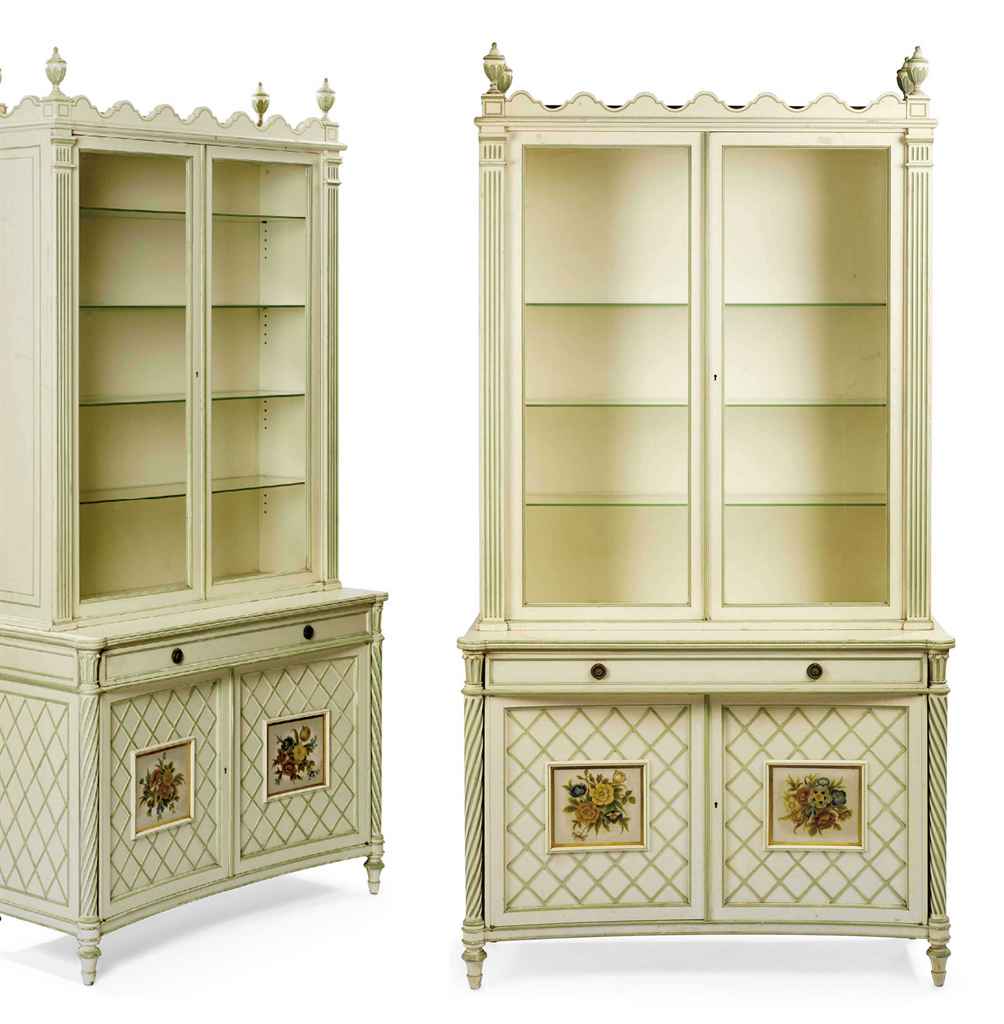

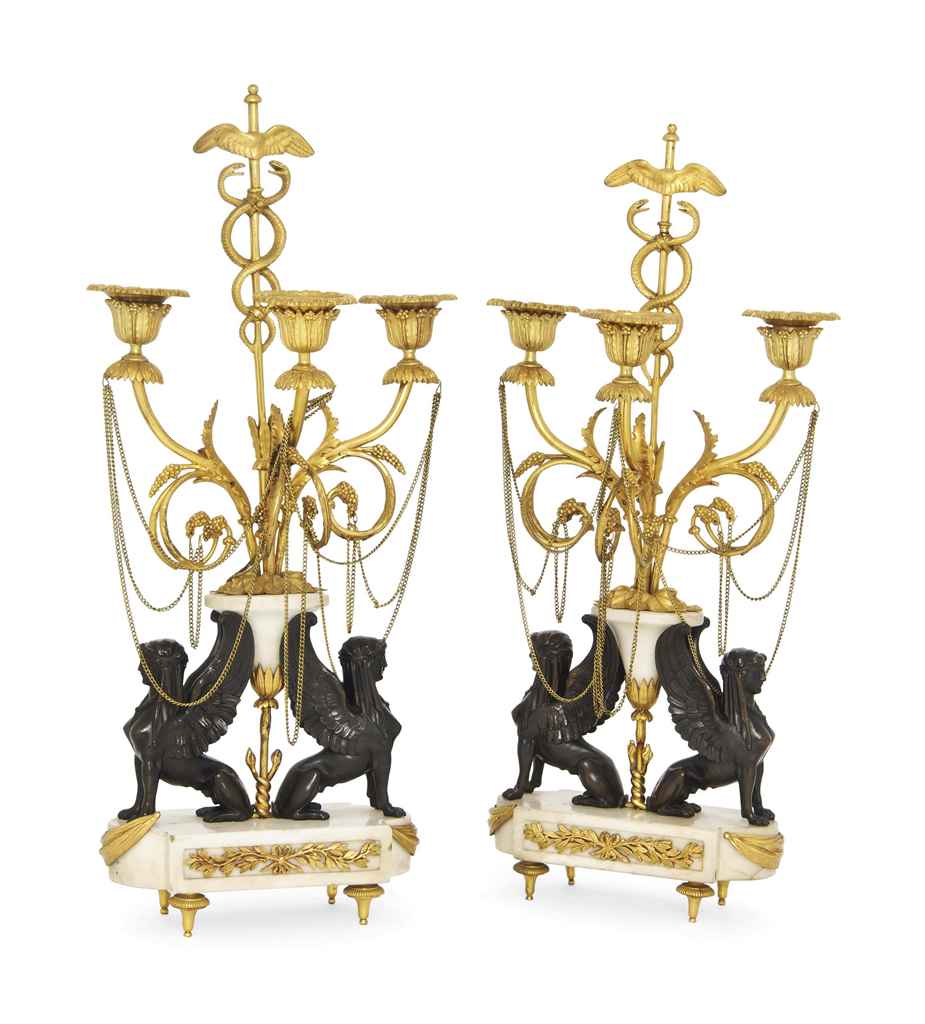

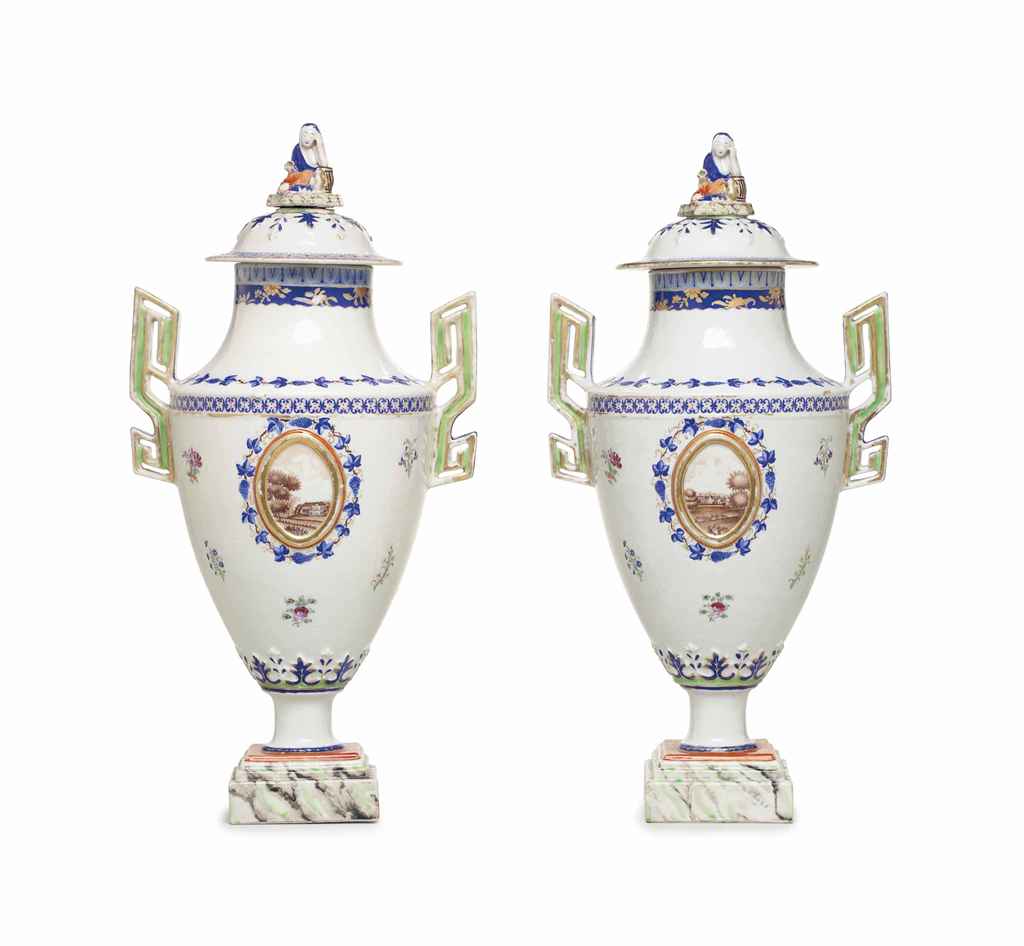
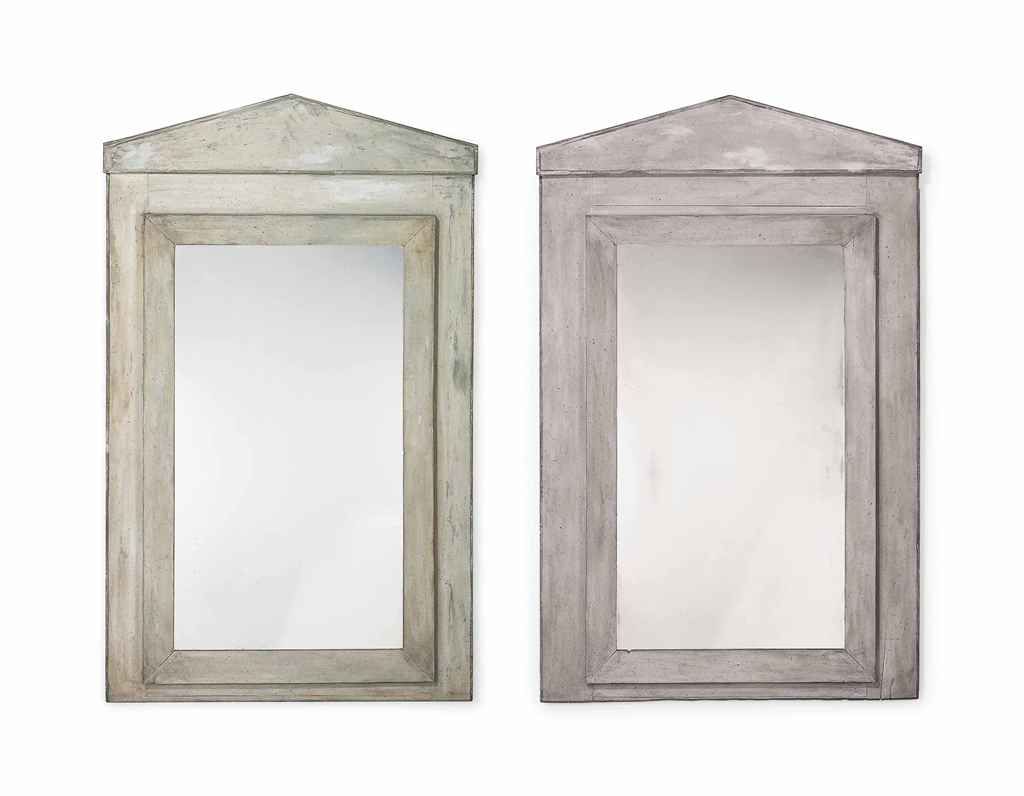
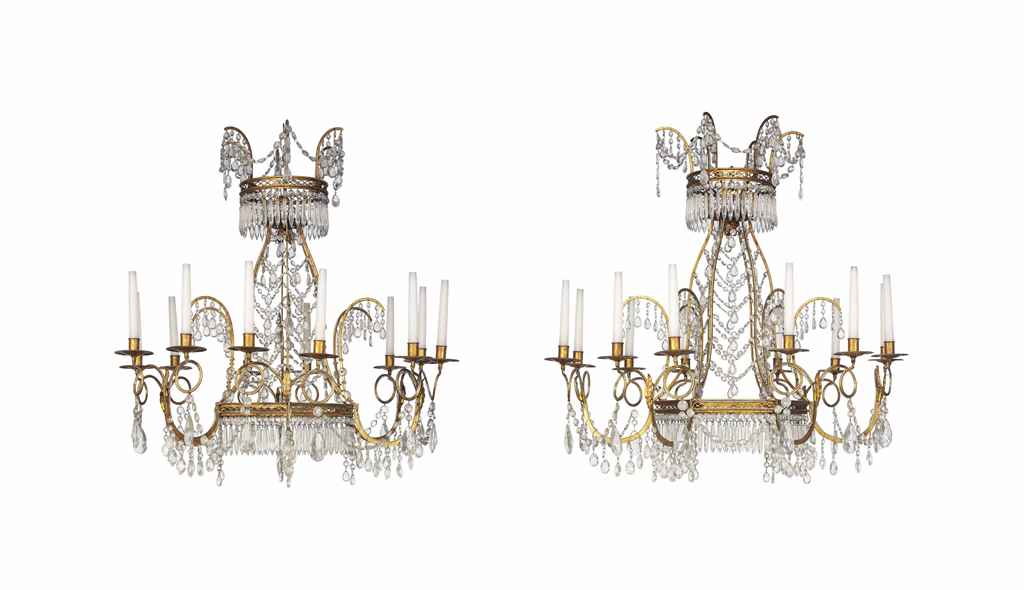
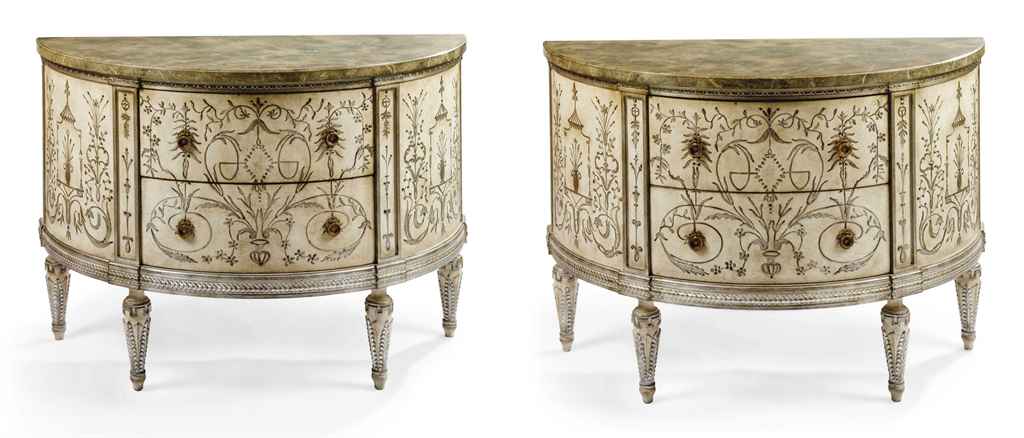
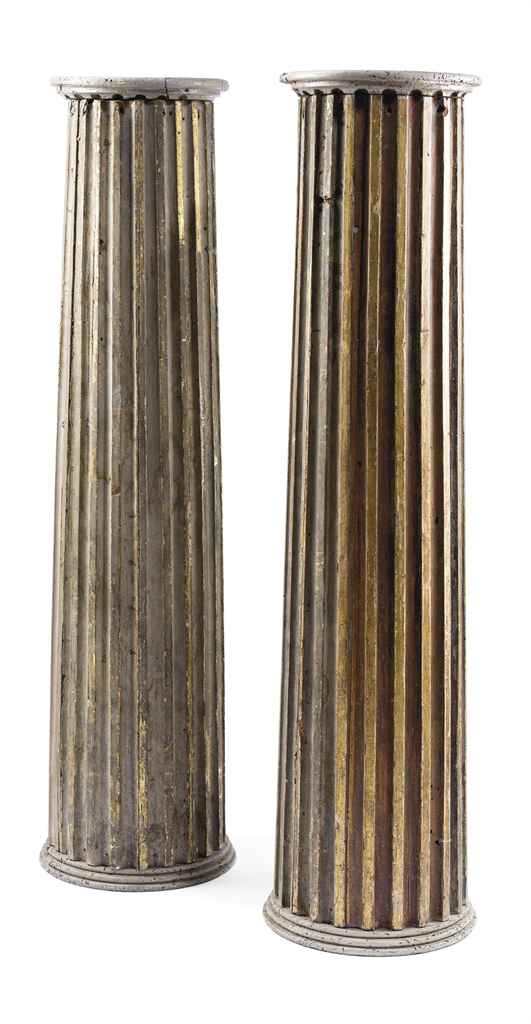






Testen Sie LotSearch und seine Premium-Features 7 Tage - ohne Kosten!
Lassen Sie sich automatisch über neue Objekte in kommenden Auktionen benachrichtigen.
Suchauftrag anlegen